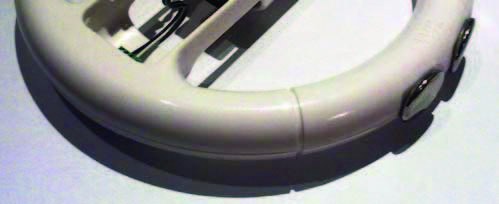Simple, comfortable hand-held patient interface for fast ECG measurements
A simple, comfortable patient interface that reduces the time to obtain the ECG (lead I) and minimises external differential-mode interference on it has been patented and developed. The device uses dual dry electrodes placed on a mechanical support that the patient touches, holds or grasps, and can be easily applied wherever a fast ECG measurement can be of interest. A laboratory prototype is available that can be wireless connected to any convenient user interface such as a PC. Partners to further develop the device and/or to establish commercial agreements along with technical cooperation are sought.The ChallengeECG recordings are currently obtained by exposing and cleaning the areas where electrodes are to be placed, normally on a recumbent patient. This takes time from professionals with special training, bothers the patient and consumes cleaning products and either disposable electrodes or conductive jelly. The proposed method does not need any special training to be applied, is comfortable and saves time and consumables. These qualities makes it interesting even to obtain just the heart rate, particularly in Community Health Centres, Sports-fitness clubs, amusement parks (for safety control before using cardiovascular-demanding attractions), Retirement and Nursing Homes, Ambient Assisted Living...It could also complement portable defibrillators in public spaces (airports, museums, stadiums, public transportation systems...)The TechnologySingle channel electrocardiograph (lead I) that uses two double electrodes symmetrically placed on a mechanical support such as a wheel or a bar handle that the patient touches, holds or grasps. Each double electrode has two conductive surfaces, one is connected to one input of a differential amplifier and the other is connected to signal ground. The closeness between each measurement point and signal ground makes the two measurement points to reach similar power-line potentials, which reduces external differential-mode interference in the acquired ECG signal. The closeness between the two double electrodes also helps in interference reduction because it forces the hands to be close to each other. The ECG signal is amplified, filtered, digitized, processed and communicated to a wireless transceiver or modem. A laboratory prototype is available that can be connected to any convenient user interface such as a local or remote PC.Innovative advantages
Current stage of developmentPrototype available ready for testing on patients.Applications and Target MarketThis technology could be of interest for companies devoted to manufacturing equipment for home health care and fitness control |
Reference numberMKT2011/0033_HNew device to control health parameters useful for Community Health Centers and Sports-fitness
Comfortable and simple to use without prior skin preparation
Easily applied wherever fast ECG measurements can be of interest.Business OpportunityTechnology available for licensing with technical cooperation Patent StatusPatent priority application
|
|---|



Share: